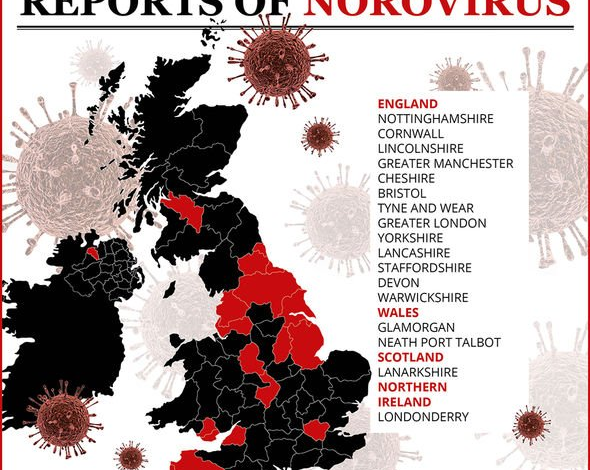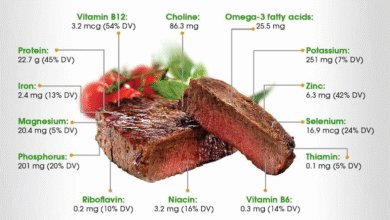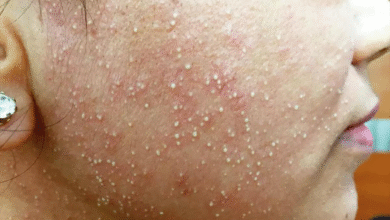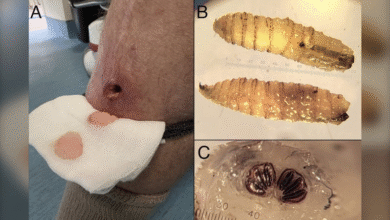Norovirus Outbreak Sickens Passengers on Cruise Ship

The recent norovirus outbreak on the Cunard cruise ship Queen Mary 2 has raised significant health concerns among travelers. Over 200 passengers have fallen ill during their month-long voyage from Southampton to New York, with diarrhea and vomiting being the primary symptoms reported. This highly contagious virus, often referred to as the stomach bug or food poisoning, thrives in crowded environments such as cruise ships, making outbreaks particularly common in such settings. To combat the spread of this illness, effective norovirus prevention strategies, including rigorous sanitation protocols, are crucial. As health officials monitor the situation, it’s imperative for passengers to be aware of norovirus symptoms and take necessary precautions to stay safe on their journeys.
The emergence of gastrointestinal illness caused by norovirus on board a major cruise liner has alarmed many. This viral infection, notorious for its rapid spread and debilitating symptoms like vomiting and diarrhea, has impacted both passengers and crew aboard the ship. The cramped conditions of cruise ships create an ideal environment for norovirus, often prompting public health experts to emphasize the importance of effective hygiene practices and containment measures. As the situation unfolds, understanding norovirus treatment and the steps to prevent further transmission is essential for those traveling on maritime journeys. With heightened awareness and vigilance, hopefully, the impact of this outbreak can be minimized.
Understanding Norovirus: Symptoms and Transmission
Norovirus is a highly infectious virus that commonly leads to acute gastroenteritis, characterized by symptoms such as nausea, vomiting, diarrhea, and stomach cramps. These symptoms can develop within 12 to 48 hours after exposure to the virus, and they often appear suddenly and may lead to quick bouts of illness that can be distressing for those affected. In the recent norovirus outbreak on the Cunard cruise ship Queen Mary 2, over 200 passengers experienced these debilitating symptoms during their month-long voyage, underscoring the virus’s capacity to proliferate in crowded environments.
The primary mode of transmission for norovirus is through direct contact with an infected person or contaminated surfaces. On cruise ships, where space is limited and many passengers share common areas, such transmission is particularly seamless. In fact, it only takes a small number of virus particles to initiate an infection, as few as 10 particles, making it crucial for passengers to practice diligent hygiene measures. Frequent hand washing and the immediate disinfection of surfaces are integral in curbing the transmission of norovirus.
Preventing Norovirus: Effective Strategies on Cruise Ships
Preventing a norovirus outbreak requires a comprehensive approach that includes proper sanitation, food safety practices, and educating passengers about hygiene. Cruise lines like Cunard have stepped up their cleaning and disinfection protocols following outbreaks to ensure guest safety. Passengers should always wash their hands frequently, especially after using the restroom and before consuming food. The CDC advises that washing fruits and vegetables thoroughly and avoiding food preparation while experiencing any symptoms of gastroenteritis are effective strategies to minimize risk.
Moreover, those aboard cruise ships should be educated on recognizing the early signs of norovirus, such as nausea and diarrhea, so they can isolate themselves promptly if symptoms arise. This not only helps them recover faster but also protects fellow passengers and crew members from potential infection. Responsible hygiene practices, along with timely reporting of illness, can significantly help in controlling any outbreak on board.
Coping with Norovirus: Treatment and Recovery
While there is no specific treatment for norovirus infections, the main focus is on managing symptoms and preventing dehydration. For those affected by the virus, Dr. Marc Siegel emphasizes the importance of staying well-hydrated, particularly when experiencing symptoms like vomiting and diarrhea. The illness typically resolves on its own within one to three days, and most individuals experience mild symptoms that do not require medical intervention. However, for vulnerable populations, including the elderly and those with weakened immune systems, medical attention may become necessary if symptoms escalate.
As part of the recovery process, it is advisable for those affected to rest and gradually resume a normal diet once symptoms subside. Simple rehydration solutions and bland foods typically aid in the recovery phase. Moreover, passengers on affected cruise ships are encouraged to follow strict health guidelines provided by health authorities and the cruise line itself. This approach ensures a swift recovery and helps maintain overall public health during times when norovirus outbreaks occur.
The Impact of Norovirus on Cruise Ship Voyages
Norovirus outbreaks can significantly impact the enjoyment of cruise ship voyages, as seen with the ongoing situation on the Queen Mary 2. With over 200 passengers reporting illness, the experience for fellow travelers may be tarnished by fear of infection. Cruise lines, particularly those like Cunard, face the challenging task of balancing the joy of travel with the necessary health precautions to ensure passenger safety. Any disruption caused by an outbreak can lead to a heightened sense of anxiety among guests and crew.
Beyond just immediate health concerns, norovirus outbreaks can affect the reputation of cruise lines. Frequent incidents can lead to guests reconsidering future travel plans and opting for land-based vacations instead. Therefore, addressing outbreaks promptly and effectively is crucial for maintaining trust and ensuring that passengers feel secure during cruises. Enhanced sanitation and emergency protocols are essential in navigating the complexities surrounding norovirus on cruise ships.
The Role of Health Authorities in Managing Norovirus Outbreaks
Health authorities, such as the Centers for Disease Control and Prevention (CDC), play a pivotal role in managing norovirus outbreaks, particularly on cruise ships where crowding exacerbates the risk of widespread transmission. In the case of the Cunard cruise ship outbreak, the CDC’s Vessel Sanitation Program was actively involved in monitoring the situation, advising the cruise line on outbreak response measures and sanitation protocols. Such oversight is vital not only for immediate containment but also for preventing future occurrences.
The CDC also emphasizes the importance of reporting cases of norovirus to facilitate comprehensive surveillance. This data enables health officials to track the virus’s prevalence and develop effective public health strategies. Furthermore, educating both cruise line staff and passengers about the disease is fundamental in promoting preventive practices, aiming to reduce the incidence and impact of norovirus in the long term.
Consequences of Norovirus for Cruise Line Businesses
The consequences of a norovirus outbreak can reverberate through a cruise line’s business model and brand image. Following an outbreak, cruise lines often face increased scrutiny and regulatory oversight, as well as potential financial repercussions from canceled trips or refunds to affected passengers. Operational costs may rise due to enhanced sanitation measures and protocols implemented to prevent future occurrences. This can strain resources and dampen profitability, particularly during peak voyage seasons.
Moreover, the reputational damage associated with a norovirus outbreak can dissuade potential customers from booking trips. As consumers increasingly prioritize health and safety when selecting travel experiences, cruise lines must respond decisively to outbreaks to restore consumer confidence. By cultivating a robust reputation for safety and hygiene, cruise lines can mitigate the long-term impacts of norovirus outbreaks on their business.
The Science Behind Norovirus: Understanding Its Resilience
Norovirus is notable for its resilience and ability to survive on surfaces for extended periods, which complicates efforts to control outbreaks effectively. Scientific studies reveal that the virus can withstand a variety of environmental conditions, making it difficult to eradicate. In cruise ship environments, the presence of norovirus on handrails, dining tables, and shared facilities highlights the importance of rigorous cleaning protocols to diminish the risk of cross-contamination among passengers.
Research indicates how norovirus can spread rapidly in closely confined spaces, such as cruise ships. The environment fosters conditions that support outbreaks, as the virus can be transmitted via aerosolized particles during vomiting episodes, further increasing infection rates. A comprehensive understanding of the virus’s biology and transmission pathways is essential for developing effective public health strategies to manage and mitigate outbreaks on cruise ships and in other communal settings.
Public Awareness and Education on Norovirus
Raising public awareness about norovirus is critical in preventing outbreaks, especially in communal settings like cruise ships. Information campaigns aimed at educating passengers about the nature and symptoms of norovirus can empower them to take proactive steps in avoiding infection. Clear communication regarding hygiene practices, including proper handwashing techniques and the importance of reporting illness, can significantly contribute to the prevention of norovirus transmission.
In addition, cruise lines should strive to create an environment where openness about health incidents is encouraged. Passengers should feel comfortable reporting symptoms without fearing stigma, which ultimately aids in identifying cases promptly and mitigating further spread. An informed public is less likely to succumb to outbreaks; thus, proactive education and engagement are vital components of public health strategies in reducing the burden of norovirus.
Future of Cruise Travel Amid Norovirus Concerns
The future of cruise travel will undoubtedly be shaped by ongoing concerns about norovirus outbreaks and passenger health safety. As more travelers express concerns about hygiene and safety on cruises, cruise lines will need to innovate and adapt to these new expectations. Implementing sophisticated sanitation technologies, such as UV light disinfection and advanced air filtration systems, could become the new norm in ensuring a safe travel experience and regaining customer trust.
Moreover, the industry may witness a shift toward more stringent health regulations and best practices driven by consumer demand and health authority guidelines. Transparency in sharing health information and outbreak responses will be crucial in establishing long-term trust between cruise lines and passengers. By proactively addressing health concerns associated with norovirus, the cruise industry can position itself to thrive despite the challenges it faces and continue to provide memorable experiences for travelers.
Frequently Asked Questions
What are the norovirus symptoms commonly associated with an outbreak?
Norovirus symptoms typically include diarrhea, vomiting, nausea, stomach cramps, low-grade fever, chills, headache, muscle aches, and fatigue. These symptoms can manifest quickly, often appearing within 12 to 48 hours of exposure to norovirus during an outbreak.
How does a norovirus outbreak typically occur on cruise ships like the Cunard Queen Mary 2?
Norovirus outbreaks on cruise ships like the Cunard Queen Mary 2 often occur due to the close quarters and shared facilities among passengers. The virus spreads rapidly through contaminated food, surfaces, and person-to-person contact, especially in environments where high-density gatherings take place.
What methods of norovirus prevention can be implemented during an outbreak?
Effective norovirus prevention strategies include frequent hand washing with soap and water, using alcohol-based hand sanitizers, disinfecting surfaces, and ensuring food safety by washing fruits and vegetables thoroughly. It’s also crucial to isolate individuals showing norovirus symptoms during an outbreak.
What is the recommended norovirus treatment for those infected during an outbreak?
There is no specific norovirus treatment; however, the best approach is to stay well-hydrated to combat dehydration caused by diarrhea and vomiting. Rest and replenishing fluids is crucial, as symptoms typically resolve within one to three days.
How serious is a norovirus outbreak on a cruise ship like the Cunard Queen Mary 2?
A norovirus outbreak on a cruise ship, such as the Cunard Queen Mary 2, can cause significant illness among passengers and crew. While most individuals recover within a few days, some may experience severe symptoms requiring medical attention, particularly those with underlying health issues or dehydration concerns.
What steps does Cunard take in response to a norovirus outbreak?
In response to a norovirus outbreak, Cunard enhances cleaning and disinfection procedures on board, isolates affected passengers, and works closely with the CDC’s Vessel Sanitation Program to monitor the situation and implement public health measures.
Is norovirus related to the flu during outbreaks on cruise ships?
No, norovirus is often mistakenly referred to as the ‘stomach flu,’ but it is not related to influenza. Norovirus causes gastroenteritis and is highly contagious, thriving in environments like cruise ships, making outbreaks more common during voyages.
What should I do if I experience symptoms of norovirus during a cruise?
If you experience norovirus symptoms during a cruise, it’s essential to isolate yourself to prevent spreading the virus to other passengers. Notify ship medical staff immediately for proper guidance and care, and focus on staying hydrated.
How can cruise passengers stay informed about norovirus outbreaks?
Cruise passengers can stay informed about norovirus outbreaks through announcements from the cruise line, monitoring updates from the CDC, and checking health advisories related to their voyage. Being proactive and informed greatly aids in prevention and response.
What is the role of the CDC in managing norovirus outbreaks on cruise ships?
The CDC plays a critical role in managing norovirus outbreaks on cruise ships by providing guidance on sanitation procedures, monitoring crew health and ship response to outbreaks, and ensuring that appropriate measures are taken to protect passengers and crew.
| Key Points | Details |
|---|---|
| Norovirus Outbreak | More than 200 passengers on a Cunard cruise ship were infected. |
| Primary Symptoms | Diarrhea and vomiting were the main symptoms reported. |
| Affected Individuals | 224 passengers and 17 crew members were affected by the virus. |
| Response Measures | Cunard implemented increased cleaning and sanitization procedures on the ship. |
| Testing | Stool specimens from sick passengers have been collected for testing. |
| Transmission | Norovirus spreads easily through contaminated food, surfaces, and person-to-person contact. |
| Prevention | Frequent handwashing, isolation if sick, and thorough cleaning are recommended. |
| Recovery Time | Most people recover within 1-3 days without treatment but dehydration may occur. |
Summary
The norovirus outbreak has significantly impacted over 200 passengers aboard the Queen Mary 2 cruise ship. This highly contagious virus, known for causing gastroenteritis, showcases the challenges of containing such illnesses in close quarters like cruise ships. With swift action from Cunard and health authorities, including enhanced cleaning protocols and effective isolation measures, passengers are being managed effectively. While symptoms typically resolve in just a few days, the key to preventing further spread lies in practicing good hygiene and prompt isolation of those affected.




